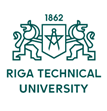RELATIONSHIPS OF PHYSICAL FITNESS TEST RESULTS AND PLAYER PERFORMANCE INDICATORS IN NATIONAL-LEVEL ICE HOCKEY PLAYERS
##manager.scheduler.building##: Rezekne Academy of Technologies
##manager.scheduler.room##: 124
Last modified: 27.02.2018
Abstract
The aim of the study is to identify the relationships of the results of the physiological and anthropometric tests and special on-ice fitness tests with individual player performance indicators during matches of the Poland men's national ice hockey team played during the U18 Ice Hockey World Championship. A total of 20 hockey players (forwards, n=12 and defensemen, n=8) of the Poland men's national ice hockey team were included in this study. All participants were performed a battery tests including maximal aerobic capacity, Wingate test, Repeated-Skate Sprint test and vertical jump test. Pearson correlations were used to examine any differences in all measures and +/– score. Only the fatigue index calculated from the repeated-skate sprint test was significantly correlated with absolute +/– score (r=0.47, p<0.05). The result of the aerobic capacity test, expressed by means of the oxygen intake value (V̇O2max), despite being statistically insignificant, reached the value of r=0.42. The results of this study suggest that game performance as indicated by the +/– score can be predicted by the fatigue index calculated from the repeated-skate sprint test.
Keywords
References
Behm, D. G., Wahl, M. J., Button, D. C., Power, K. E., & Anderson, K. G. (2005). Relationship between hockey skating speed and selected performance measures. Journal of Strength and Conditioning Research, 19(2), 326–331.
Bishop, D., Lawrence, S., & Spencer, M. (2003). Predictors of repeated-sprint ability in elite female hockey players. Journal of Science and Medicine in Sport, 6(2), 199–209.
Bracko, M. R., & George, J. D. (2001). Prediction of ice skating performance with off-ice testing in women’s ice hockey players. Journal of Strength and Conditioning Research, 15(1), 116–122.
Buchheit, M., Lefebvre, B., Laursen, P. B., & Ahmaidi, S. (2011). Reliability, usefulness, and validity of the 30-15 Intermittent Ice Test in young elite ice hockey players. Journal of Strength and Conditioning Research, 25(5), 1457–1464.
Burr, J. F., Jamnik, R. K., Baker, J., Macpherson, A., Gledhill, N., & McGuire, E. J. (2008). Relationship of physical fitness test results and hockey playing potential in elite-level ice hockey players. Journal of Strength and Conditioning Research, 22(5), 1535–1543.
Carey, D. G., Drake, M. M., Pliego, G. J., & Raymond, R. L. (2007). Do hockey players need aerobic fitness? Relation between VO2max and fatigue during high-intensity intermittent ice skating. Journal of Strength and Conditioning Research, 21(3), 963–966.
Davis, J. A. (2006). Direct determination of aerobic power. In P. J. Maud & C. Foster (Eds.) (2nd ed., pp. 9–18). Champaign, IL: Human Kinetics.
Diakoumis, K., & Bracko, M. R. (1998). Prediction Of Skating Performance With Off-ice Testing In Deaf Ice Hockey Players. Medicine & Science in Sports & Exercise, 30(5), 272.
Durocher, J. J., Leetun, D. T., & Carter, J. R. (2008). Sport-specific assessment of lactate threshold and aerobic capacity throughout a collegiate hockey season. Applied Physiology, Nutrition, and Metabolism = Physiologie Appliquee, Nutrition et Metabolisme, 33(6), 1165–1171.
Farlinger, C. M., Kruisselbrink, L. D., & Fowles, J. R. (2007a). Relationships to skating performance in competitive hockey players. Journal of Strength and Conditioning Research, 21(3), 915–922.
Farlinger, C. M., Kruisselbrink, L. D., & Fowles, J. R. (2007b). Relationships to skating performance in competitive hockey players. Journal of Strength and Conditioning Research, 21(3), 915–922.
Green, M. R., Pivarnik, J. M., Carrier, D. P., & Womack, C. J. (2006). Relationship between physiological profiles and on-ice performance of a National Collegiate Athletic Association Division I hockey team. Journal of Strength and Conditioning Research, 20(1), 43–46.
McArdle, W. D., Katch, F. I., & Katch, V. L. (2010). Exercise physiology: nutrition, energy, and human performance (7th ed.). Baltimore, MD: Lippincott Williams & Wilkins.
Montgomery, D. L. (1988). Physiology of Ice Hockey. Sports Medicine, 5(2), 99–126.
Peyer, K. L., Pivarnik, J. M., Eisenmann, J. C., & Vorkapich, M. (2011). Physiological characteristics of National Collegiate Athletic Association Division I ice hockey players and their relation to game performance. Journal of Strength and Conditioning Research, 25(5), 1183–1192.
Reed, A., Hansen, H., Cotton, C., Gauthier, R., Jette, M., Thoden, J., & Wenger, H. (1980). Development and validation of an on-ice hockey fitness test [abstract]. Canadian Journal of Applied Sport Sciences, (5), 245.
Roczniok, R., Stanula, A., Gabryś, T., Szmatlan-Gabryś, U., Gołaś, A., & Stastny, P. (2016). Physical fitness and performance of polish ice-hockey players competing at different sports levels. Journal of Human Kinetics, 50(2), 201–208.
Roczniok, R., Stanula, A., Maszczyk, A., Mostowik, A., Kowalczyk, M., & Zając, A. (2016). Physiological, physical and on-ice performance criteria for selection of elite ice hockey teams. Biology of Sport, 33(1), 43–48.
Stanula, A., & Roczniok, R. (2014). Game Intensity Analysis of Elite Adolescent Ice Hockey Players. Journal of Human Kinetics, 44(1), 211–221.
Stanula, A., Roczniok, R., Maszczyk, A., Pietraszewski, P., & Zając, A. (2014). The role of aerobic capacity in high-intensity intermittent efforts in ice-hockey. Biology of Sport, 31(3), 193–195.
Tesch, P. A., & Wright, J. E. (1983). Recovery from short term intense exercise: its relation to capillary supply and blood lactate concentration. European Journal of Applied Physiology and Occupational Physiology, 52(1), 98–103.
Tomlin, D. L., & Wenger, H. a. (2001). The relationship between aerobic fitness and recovery from high intensity intermittent exercise. Sports Medicine (Auckland, N.Z.), 31(1), 1–11.
Vescovi, J. D., Murray, T. M., Fiala, K. a., & VanHeest, J. L. (2006). Off-ice performance and draft status of elite ice hockey players. International Journal of Sports Physiology and Performance, 1(3), 207–221.








